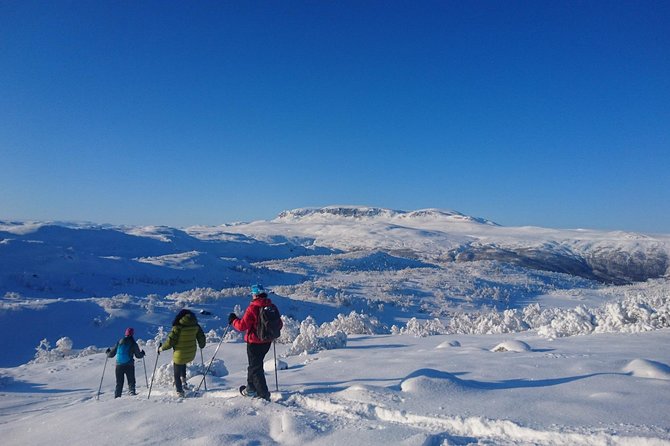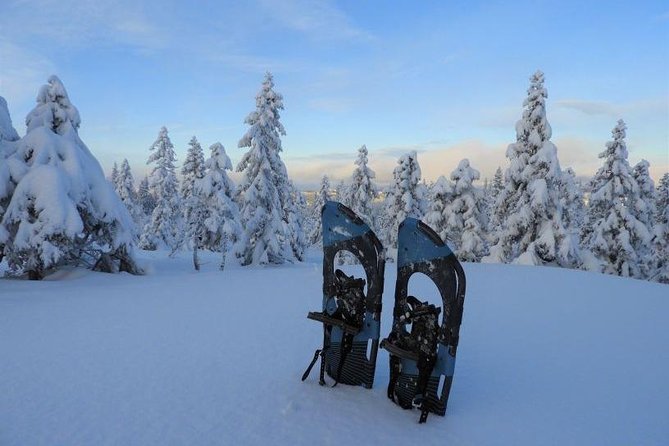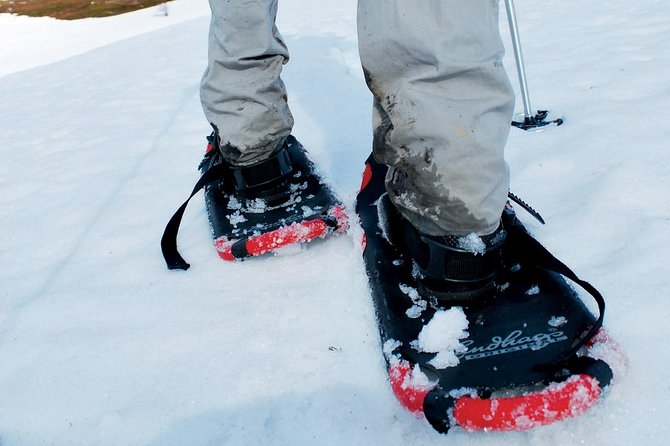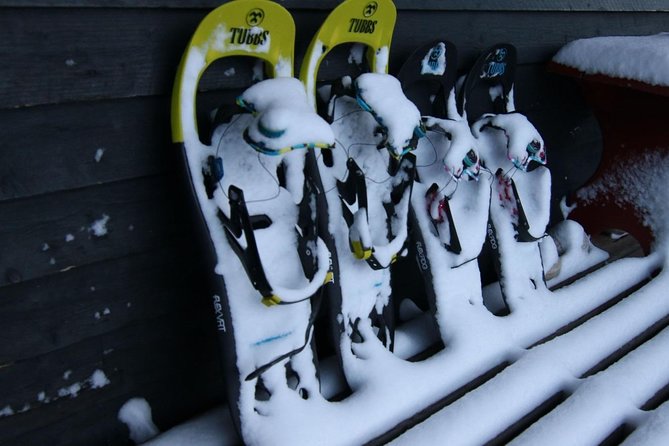Hiking on Snowshoes
Hiking on snowshoes enhances stability, traction, and access to remote areas while preventing deep snow sinking. Essential gear includes snowshoes, poles, insulated boots, layers, and eye protection. Top trails like Paradise in Mount Rainier Park offer varying scenery and difficulty levels for all skill levels. Safety tips advise checking weather, dressing warmly, carrying essentials, and watching for hypothermia signs. Choosing snowshoes involves considering terrain, weight, and comfortable bindings for optimal performance. Start exploring snowy landscapes with these tips and gear essentials.
Benefits of Hiking on Snowshoes

When hiking on snowshoes, travelers can experience improved stability and traction on snowy terrain, enhancing their outdoor adventures. Snowshoes distribute the weight of the hiker more evenly, preventing them from sinking deep into the snow. This added surface area also provides better flotation, making it easier to walk on top of powdery snow.
Plus, the crampons on the bottom of snowshoes grip the snow and ice, reducing the risk of slipping or sliding on slippery surfaces. With the use of snowshoes, hikers can access more remote and untouched areas that might be inaccessible with regular hiking boots.
Essential Gear for Snowshoe Hiking
For optimal safety and comfort while snowshoe hiking, travelers should ensure they have the necessary gear to navigate through snowy terrain effectively. The essential gear for snowshoe hiking includes snowshoes, poles for balance and stability, insulated waterproof boots to keep feet dry and warm, gaiters to prevent snow from getting into boots, warm and moisture-wicking layers to regulate body temperature, gloves or mittens to protect hands from the cold, a hat or beanie to retain heat, sunglasses or goggles for eye protection against snow glare, a backpack to carry essentials like water, snacks, a map, and a compass or GPS device for navigation.
Having the right gear can make a significant difference in the overall snowshoe hiking experience.
Top Snowshoe Hiking Trails

Discover some of the top snowshoe hiking trails that offer breathtaking views and invigorating experiences for outdoor enthusiasts.
One such trail is the Paradise area in Mount Rainier National Park, where snowshoers can trek through snowy meadows with stunning views of the mountain.
Another popular trail is the Maroon Lake Snowshoe Trail in Colorado, known for its picturesque frozen lake and snow-capped peaks.
For those seeking a challenging adventure, the Tuckerman Ravine Trail in New Hampshire provides a thrilling snowshoeing experience with steep ascents and rewarding views.
These trails offer a mix of scenery and difficulty levels, catering to both beginners and experienced snowshoers looking for a memorable outdoor excursion.
Safety Tips for Snowshoe Hiking

To ensure a safe and enjoyable snowshoe hiking experience, always remember to check the weather conditions and trail difficulty before setting out on your adventure. Dressing appropriately for the cold weather is essential, including wearing layers, waterproof clothing, and sturdy boots.
It’s also crucial to carry essential safety gear such as a map, compass, whistle, and first aid kit. Inform someone of your hiking plans and expected return time. Stay hydrated and nourished throughout your hike, and be mindful of signs of hypothermia or frostbite. Keep an eye on changing weather conditions and be prepared to turn back if needed.
Choosing the Right Snowshoes
What key factors should you consider when selecting the right snowshoes for your hiking adventures? When choosing snowshoes, it’s crucial to keep in mind the following:
-
Terrain Type: Consider the terrain where you’ll be hiking – whether it’s flat, rolling, or steep. Different snowshoes are designed for varying terrains to provide better traction and floatation.
-
User Weight: Your weight plays a significant role in determining the size and load capacity of the snowshoes you should choose. Heavier individuals will require larger snowshoes to prevent sinking in the snow.
-
Binding Type: The binding system should be comfortable and easy to use, ensuring a secure fit. Look for bindings that are adjustable and compatible with your hiking boots for a snug and stable feel.
Winter Wildlife Encounters
Winter hikers may have the thrilling opportunity to encounter elusive wildlife in their natural snowy habitats. While trekking on snowshoes, keep an eye out for tracks and signs of animals like deer, foxes, or even the occasional bobcat.
The quiet nature of snowshoeing allows for a more intimate wildlife experience. Remember to respect their space and observe from a safe distance to prevent disturbing their natural behaviors.
Binoculars can enhance your chances of spotting creatures like winter birds or snowshoe hares. If you’re lucky, you might catch a glimpse of a majestic elk or a playful squirrel.
Being mindful of the environment and the animals’ needs ensures a harmonious coexistence during your winter adventures.
Snowshoe Hiking Etiquette

Proper snowshoe hiking etiquette ensures a safe and enjoyable experience for all outdoor enthusiasts. To make the most of your snowshoeing adventure, remember these key points:
-
Stay on the designated trails: By sticking to marked paths, you help preserve the environment and reduce the risk of getting lost.
-
Yield to others: Uphold a friendly atmosphere by yielding to faster hikers, and be mindful of wildlife and their habitats.
-
Leave no trace: Pack out all trash, respect nature, and leave the trail as you found it to maintain its beauty for others.
Following these simple guidelines will enhance your snowshoeing experience while respecting the environment and fellow hikers.
Common questions
Can I Rent Snowshoes at the Trailhead or Do I Need to Bring My Own?
For those wondering about snowshoe rentals, it’s wise to check with the trailhead beforehand. Having your own gear is often recommended for a smoother experience, but some locations might offer rental services for added convenience.
Are There Any Guided Snowshoe Hiking Tours Available in the Area?
Yes, guided snowshoe hiking tours are available in the area. Travelers can join experienced guides to explore the stunning winter landscapes. These tours provide a safe and educational way to enjoy the beauty of the snow-covered surroundings.
What Is the Best Time of Day to Go Snowshoe Hiking?
The best time of day varies, but mornings are generally ideal due to better snow conditions and wildlife activity. However, afternoons offer warmer temperatures. It’s recommended to check local forecasts and consider personal preferences for the optimal snowshoe hiking experience.
Are There Any Restrictions or Permits Required for Snowshoe Hiking in Certain Areas?
In certain areas, restrictions or permits may be required for snowshoe hiking. It’s essential to check with local authorities or park services before embarking on your adventure to ensure compliance with regulations and to enjoy a safe experience.
How Do I Properly Prepare for a Snowshoe Hiking Trip in Terms of Physical Fitness and Endurance?
To prepare for a snowshoe hiking trip in terms of physical fitness and endurance, one should focus on building leg strength, cardiovascular fitness, and endurance. Incorporating exercises like hiking, running, and strength training can help improve overall stamina and performance.
Last Words

To sum it up, hiking on snowshoes offers a unique and rewarding way to explore winter landscapes. From the tranquility of snowy forests to the thrill of conquering icy peaks, this activity provides a blend of serenity and excitement.
By following essential gear and safety tips, choosing the right snowshoes, and respecting wildlife and etiquette, adventurers can fully enjoy the magic of snowshoe hiking.
So lace up those snowshoes and embark on a winter adventure like no other!